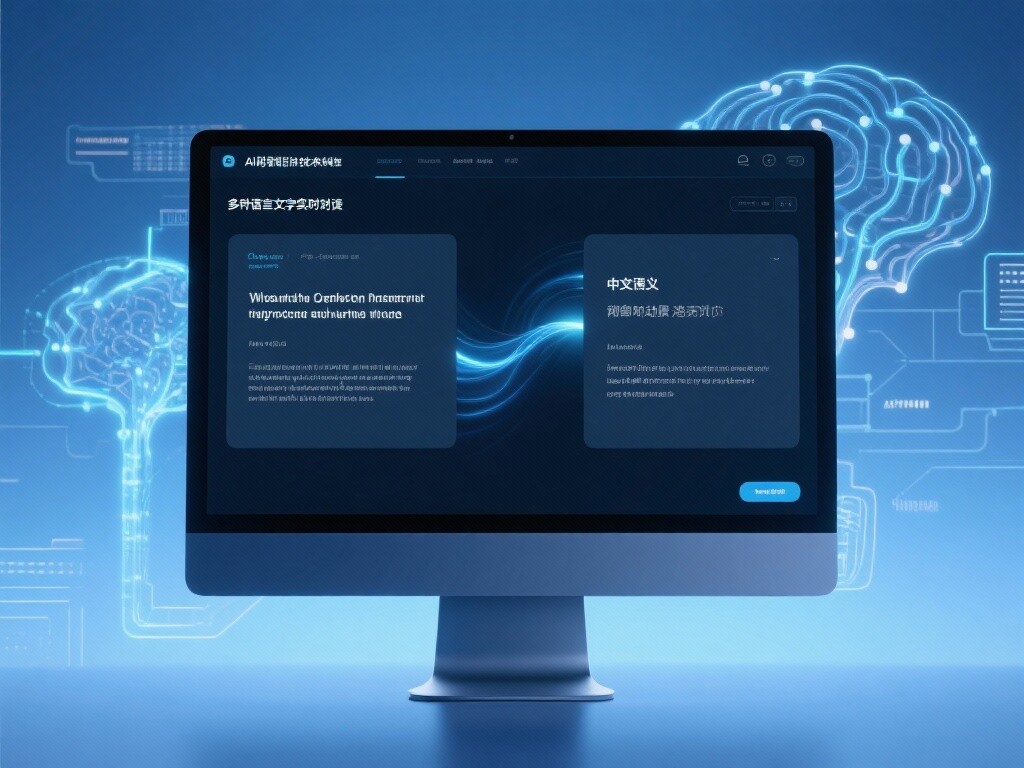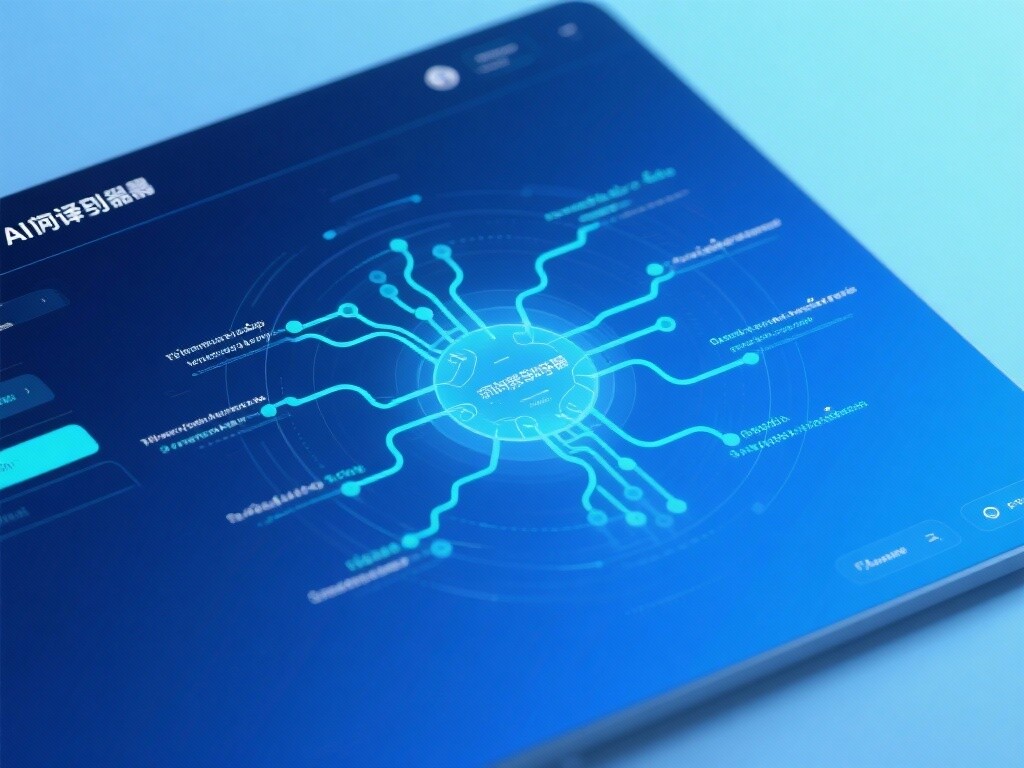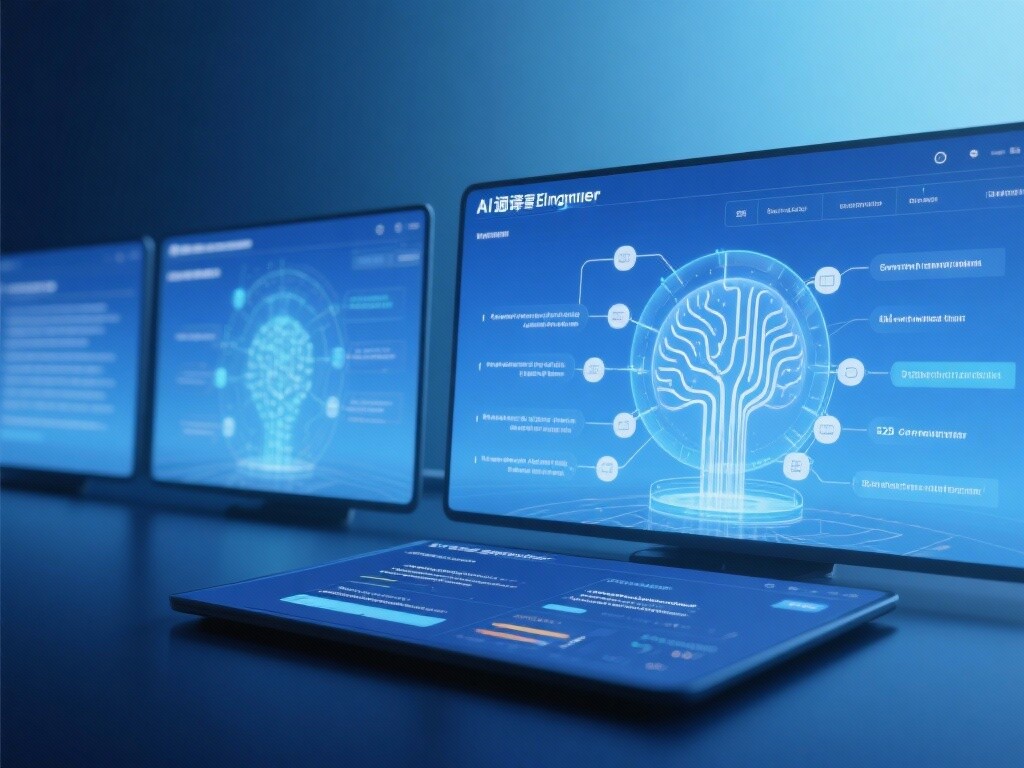Easy Camp Cloud Intelligent Website Construction and Marketing System Platform!
I. The Authoritative Definition and Core Value of AI Translation Engine
1. The Authoritative Definition of AI Translation Engine
AI Translation Engine is a highly complex software system that utilizes Artificial Neural Networks (ANN), deep learning models (e.g., Transformer), and large-scale parallel corpora to simulate the human brain's comprehension, conversion, and generation of language. It can capture the context, semantics, and syntactic structure of the source language and accurately transform it into the target language, achieving a qualitative leap from literal translation to semantic translation.
2. The Strategic Core Value of AI Translation Engine
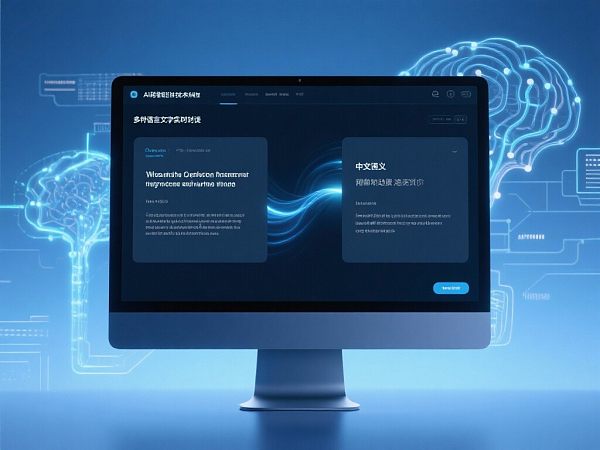
II. The Development History of AI Translation Engine: From Rules to Deep Learning
The development history of AI translation engines is an evolutionary journey from structured rules to mimicking human brain connections.
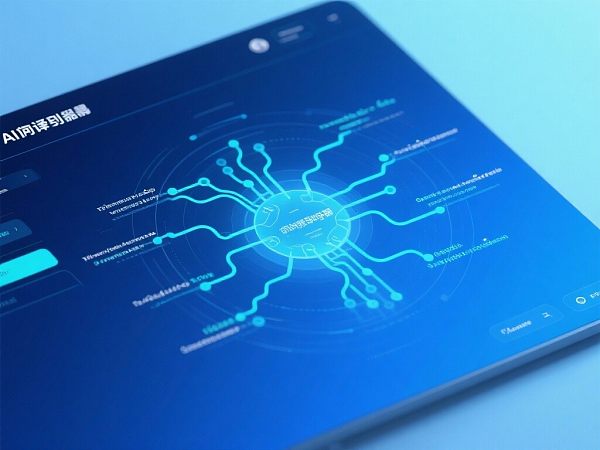
1. Early Stage: Rule-Based Machine Translation (RBMT) (1950s-1990s)
Technical Features: Relies on manually written grammar rules and dictionaries.
Translation Quality: Fast but rigid and syntactically disordered, ineffective for complex and colloquial expressions.
2. Transition Stage: Statistical Machine Translation (SMT) (1990s-2015)
Technical Core: Based on large-scale parallel corpora, uses statistical models to calculate the most probable word order and phrases in the target language.
Translation Quality: Significant improvement over RBMT but still unable to resolve long-range dependencies and global coherence.
3. Revolutionary Stage: Neural Machine Translation (NMT) and Deep Learning (2015-Present)
Milestone: The emergence of Neural Machine Translation (NMT), particularly the Transformer architecture (e.g., Google's Transformer model), marks a leap in translation technology.
Technical Features: NMT uses deep learning models to process entire sentences as "vectors", better understanding global context and long-distance dependencies.
Trend: The introduction of reinforcement learning and fine-tuning techniques enables AI translation engines to achieve quality that approaches or even surpasses professional human translation in certain fields.
III. The Technical Principles of AI Translation Engine: Neural Models and Contextual Understanding
The high-precision translation capability of AI translation engines primarily relies on Transformer models, attention mechanisms, and data preprocessing.
1. Transformer Architecture and Attention Mechanism
Principle: The Transformer architecture is the cornerstone of modern NMT. It completely abandons traditional RNN/CNN structures, using only the attention mechanism.
Core Advantage: The attention mechanism allows the model to dynamically focus on all relevant words in the source sentence when processing a word, solving the long-distance dependency and complex context issues that SMT and early NMT could not handle.
2. Encoder-Decoder Model
Principle: NMT models typically consist of an encoder and a decoder.
Workflow:
Encoder: Reads the source language sentence, compressing it into a "semantic vector" (Context Vector) that captures the full meaning of the sentence.
Decoder: Receives this semantic vector and generates the target language sentence word by word, following the target language's grammar rules.
3. Massive Corpora and Model Fine-Tuning
Principle: The performance of AI translation engines depends on the scale and quality of the training corpora.
Fine-Tuning Technique: To serve specific industries (e.g., medical or legal), developers use domain-specific terminology and documents to fine-tune general models, significantly improving precision and terminology consistency in specific scenarios.
IV. The Core Features and Application Advantages of AI Translation Engine
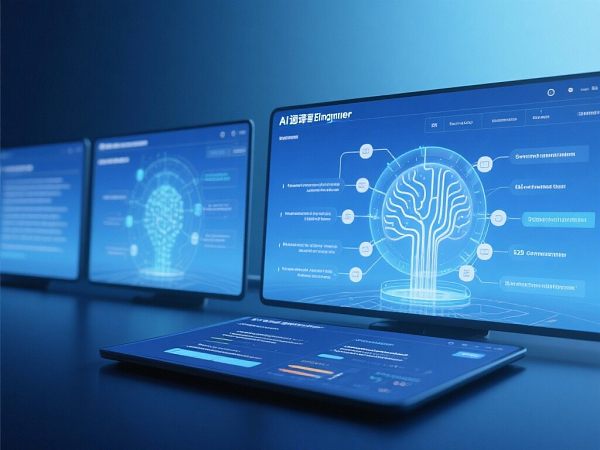
1. Leap in Translation Quality: Semantic and Stylistic Restoration
Features: Capable of handling polysemous words, idioms, and puns, and adjusting the output style (e.g., formal, informal, journalistic) based on input content.
Advantages: Translation results are more natural and fluent, making them more persuasive and professional in business and marketing contexts.
2. Real-Time and High-Concurrency Processing Capabilities
Features: Leveraging GPU and TPU hardware, AI translation engines can complete translations at millisecond speeds.
Advantages: Suitable for scenarios requiring instant responses, such as real-time chat, cross-border video conferences, and online customer service.
3. Terminology Consistency and CAT Tool Integration
Features: Seamlessly integrates with enterprise terminology bases and translation memory (TM).
Advantages: Ensures 100% consistency in professional terminology across all documents and content, particularly crucial in legal and technical documents.
4. International SEO and Localization Support
Features: Provides website API interfaces, supporting automated multilingual deployment of website content and assisting in localized keyword selection.
Advantages: Accelerates the global localization of enterprise websites and product descriptions, helping businesses seize international markets.
V. The Deep Applications and Scenarios of AI Translation Engine
1. Cross-Border E-Commerce and Global Content Marketing
Applications: Real-time translation of product descriptions, customer reviews, FAQs, and generation of multilingual blog content.
Strategy: Use AI translation engines to quickly produce localized marketing content, combined with Hreflang tag deployment, to optimize international SEO and enhance global traffic and conversion rates.
2. Cross-Border Enterprise Internal Communication and Collaboration
Applications: Real-time translation of internal emails, IM messages, and video conference subtitles.
Strategy: Deploy enterprise-grade AI translation engines to ensure employees with different language backgrounds can collaborate seamlessly and efficiently, improving organizational efficiency.
3. Legal, Medical, and Financial Professional Fields
Applications: Translation of legal contracts, medical reports, financial research, and other high-risk professional documents.
Strategy: Use AI engines fine-tuned with domain-specific corpora and combine them with human post-editing (PE) workflows to ensure 99.9% accuracy in terminology and semantics.
4. Customer Service and Social Media Interaction
Applications: Real-time translation of online chat logs, social media comments, and user feedback.
Strategy: Leverage the sentiment analysis and real-time translation capabilities of AI engines to achieve 24/7, multilingual, rapid customer responses, enhancing customer satisfaction.
VI. EasyProfit: Your Enterprise-Grade AI Translation Engine Solution Expert
EasyProfit's AI translation engine solution is a systematic service based on the most advanced NMT architecture, domain-specific fine-tuning, and enterprise-grade security compliance.
Customized NMT Engines: We do not offer generic models but customize and fine-tune AI engines based on your industry and corpus characteristics to achieve the highest level of translation precision.
High Security and Data Privacy: Enterprise-grade deployment ensures your sensitive documents and data remain within your secure enterprise environment during translation, fully complying with GDPR and other international data privacy regulations.
Full-Stack Integration and Workflow Optimization: Provides API interfaces for seamless integration into your CRM, content management system (CMS), and CAT tools, automating translation workflows.
Human Collaboration and Quality Assurance: Offers a hybrid model of AI translation + human post-editing (AI + PE), achieving professional-grade translation quality at the lowest cost.
FAQ
1. Can the translation quality of AI translation engines reach the level of professional human translators?
Answer: In general domains and certain specialized fields, AI translation engines have reached or even surpassed the average level of human translation.
General domain: For everyday conversations and news reports, the NMT model can provide very fluent and high-precision translations .
In professional fields: Through precise industry fine-tuning , the AI engine performs excellently in terms of terminology consistency , but in literary creation, texts with complex cultural backgrounds and those that rely heavily on subjective judgment , human proofreading and polishing are still required.
2. What are the fundamental differences between AI translation engines and traditional Google Translate?
Answer: The core differences lie in "model architecture, contextual understanding, and customization capabilities".
Model architecture: Professional AI engines often use the latest Transformer or optimized NMT architecture , which provides a deeper understanding of the context and logic of long sentences .
Customization: The enterprise-grade AI engine supports fine-tuning using customer-owned data , achieving accuracy far exceeding that of general translation tools in specific terminology and internal enterprise contexts .
3. How can the security of sensitive data processed by the AI translation engine be guaranteed?
Answer: Through localized deployment and enterprise-grade encryption.
Deployment method: EasyCreation provides localized or private cloud deployment solutions to ensure that data is not uploaded to any public servers during the translation process.
Encryption and Compliance: All data transmissions employ high-level encryption protocols and strictly comply with international data privacy and security regulations such as GDPR and CCPA .
4. After implementing an AI translation engine, will human translators still be needed?
Answer: Yes. AI engines are "super tools" for human translators, not replacements.
The role of AI: processing ** 80% of the initial draft translations consisted of repetitive content and massive amounts of data.
The role of humans: focusing on high-value tasks requiring human creativity and professional judgment, such as post-editing (PE), cultural refinement, style adjustment, and brand marketing copywriting . AI has significantly improved the efficiency and value of human work.
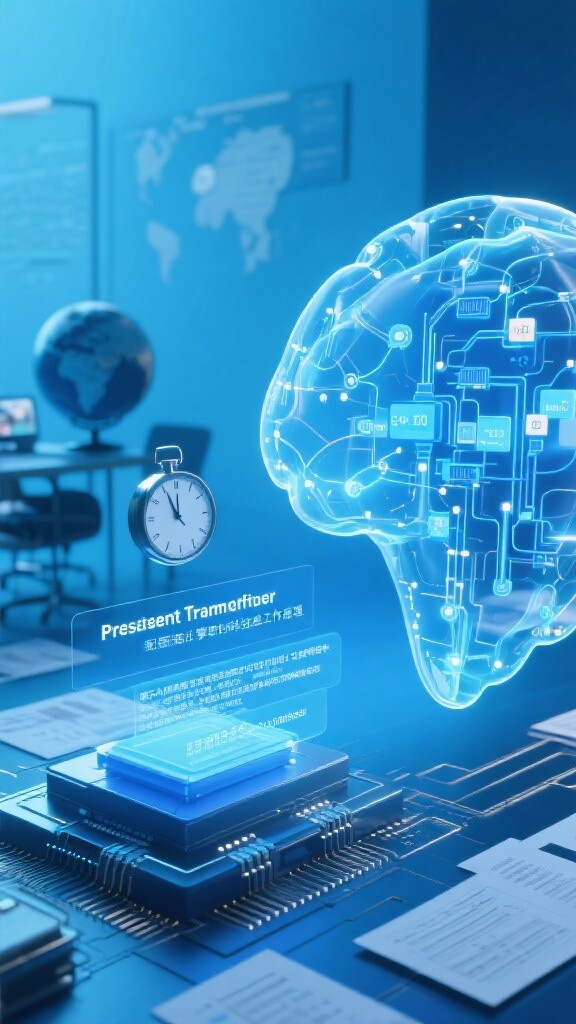
Customer Reviews
Mr. Zhang, IT Director of a global legal services firm
"We process millions of words of multinational contracts and legal documents every year, including terminology..." consistency is our lifeline. After introducing YiYingBao's legally-focused, fine-tuned AI translation engine , our translation speed has improved. , translation costs reduced . Most importantly, the AI engine's accuracy and consistency in legal terminology far surpasses our previous SMT tools, allowing our human team to focus solely on high-value legal review and cultural nuance correction .
Ms. Dong, Content Marketing Director of a cross-border D2C brand
“We are global” markets required the rapid deployment of localized product and blog content . EasyPro's AI translation engine provided us with a website API , enabling our content to be published from Chinese to... The automated deployment cycle for 12 language markets has been shortened. . AI not only translated the text but also assisted us in selecting localized keywords , greatly optimizing our international SEO efficiency . Global website traffic experienced exponential growth within six months .

